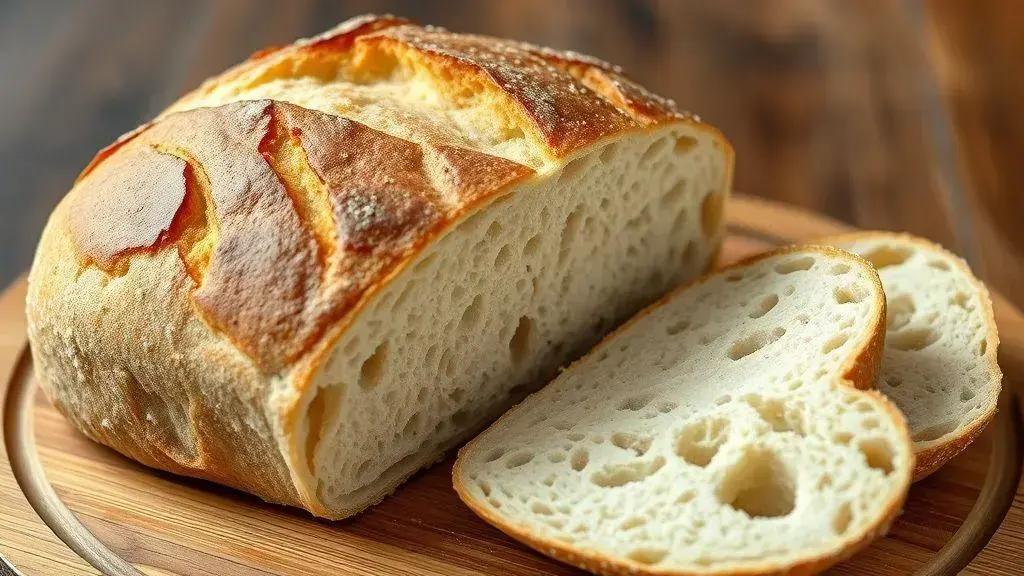Ingredients
Method
- Combine the flour, instant yeast, and salt in a large bowl, mixing well.
- Add the warm water and olive oil. Mix with a spoon or spatula until no dry flour remains. The dough will be sticky.
- Cover the bowl with plastic wrap or a damp towel. Let it rise at room temperature for 1 to 2 hours, or until doubled in size.
- Lightly flour your work surface. Gently transfer the dough onto it, being careful not to deflate the air bubbles.
- Sprinkle flour over the dough, and use floured hands to shape it into a rough rectangle, about 2-3 cm thick.
- Cut the dough into 2 equal pieces for smaller loaves, or leave whole for a larger loaf.
- Place the shaped dough onto a baking sheet lined with parchment paper, and cover loosely. Allow to rest for 45 minutes.
- Preheat your oven to 230°C (445°F) with a shallow pan of water on the bottom rack to create steam.
- Bake for 20 to 25 minutes, or until the crust is golden and crisp. Let it cool on a rack before slicing.
Notes
Ciabatta stands out as one of Italy’s most beloved artisanal breads, known for its light, open texture and crisp, golden crust. What makes ciabatta so versatile is its subtle flavor; it’s ideal for sandwiches, bruschetta, or served simply with olive oil and balsamic vinegar.
Practical Tips and Tricks
- Hydration is key: Ciabatta dough should be sticky and wetter than most bread doughs. Avoid adding extra flour, even if it feels very loose—this ensures those signature air pockets inside the loaf.
- Don’t rush the rise: The long initial fermentation develops flavor and the airy crumb. It’s natural for the dough to be shaggy; just let time (and yeast!) do the work.
- Keep it gentle: When handling the dough after the first rise, use floured hands and avoid kneading. Shaping too aggressively will deflate its beautiful bubbles.
- No bread flour? All-purpose flour works perfectly in this recipe, but you can blend in up to 20% whole wheat for a rustic touch and more flavor.
Technique Insights
- Creating steam in the oven helps the loaf develop a crispier, shinier crust. Simply place a pan of water on the bottom rack before baking.
- For even better results, use a baking stone or steel preheated with your oven, which mimics a traditional hearth and boosts oven spring.
Serving Ideas and Variations
- Turn slices into garlic bread or crostini for appetizers.
- Stuff your ciabatta with grilled vegetables, mozzarella, and pesto for a Mediterranean sandwich.
- Try a whole grain version by substituting 1/2 cup of the flour for rye or spelt.
- Day-old ciabatta makes outstanding panzanella salad or homemade croutons.
